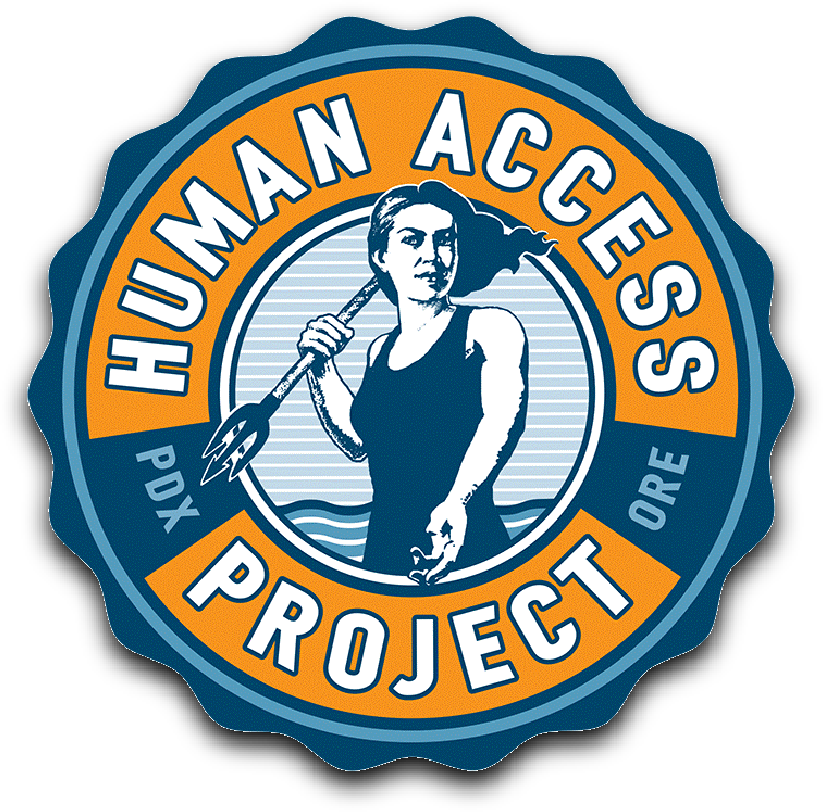

March 24, 2019
|
|
By Ringleader, Willie Levenson
The Big Float’s first year was 2011. Around 1,000 people participated. It was a crazy lift and learning curve to get it together.
To put on The Big Float we had to find sponsors, pull permits, plan the event, line up bands and vendors, create a website, and hope folks came. It was thrilling to pull it off and experience validation that we were on to something. Something potentially big.
We realized The Big Float had tremendous potential to impact how our community related to our river. It could be a vehicle for culture change, and out of that thought came the Human Access Project.
Once I had a chance to decompress and sort out what had happened in the whirlwind of TBF 1, it occurred to me that if I wanted to be an honest advocate (therefore a more effective advocate) I should start swimming in the Willamette River more. But where to do it?
At over 4,000 acres, the Willamette River is Portland’s second largest public space and natural area. It’s owned by the citizens of Oregon. Yet, according to Portland Parks and Recreation, less than 5% of the central city has access to the river’s edge. Portland has an extreme deficit of water edge access points. I saw this flat and moderately accessible swimming spot under the Hawthorne Bridge on the eastside of the Willamette River, near the popular wood dock used by boaters and now swimmers. Problem was it was cluttered with concrete chunks.
So I started swimming there a few days a week. In between dips, I would make a big pile of concrete chunks hoping someone would notice. No surprise, no one seemed to notice or care. I was determined to get rid of these concrete chunks. The first step was getting approval to do it. This required getting permission from eight separate agencies to remove the concrete chunks. It wasn’t easy to get an okay from all these parties, but we got it, with the stipulation that heavy mechanized equipment could not be used. Uh, okay. This conditional approval felt like a veiled “no”. Removing tons of concrete by hand – without heavy mechanized equipment? That’s not easy to do, but it seemed worth a try. Dumbfounded at how to move forward, serendipity struck.
I heard on Oregon Public Broadcasting that Inverness Jail has a work crew program that sometimes does community service. After a few calls, I reached a Sergeant and told him I had permission from eight separate agencies to remove concrete chunks from the river but can’t use heavy equipment. I said that seeing this concrete communicates that our city does not care about our river. The Sergeant said he “got it” and offered up his crew for the first two of what would become 15 total clean up days over four years. After the first two cleanups, budget did not allow for any more “free” days, so we had to fundraise to bring the crew out for the remaining days.
This concrete removal work was done very discretely. Although we’d received approval from all the different entities, it would only take one changed mind to shut down our work. Our cleanup events were not publicized. It was the Inverness Inmate Work Crew, my friends, and myself. When asking for volunteer help, I said the idea is to make a beach but it won’t be easy – it’s the world’s most ancient workout, lifting heavy rocks and chunks of concrete. The Inverness Inmate Work Crew had an ATV with a bed on the back, loads of heavy gauge steel picks, and rakes. All we needed was the muscle. It was (and continues to be) an amazing experience working with the Work Crews. The people who participate in the crews are handpicked for good behavior. It gets them out of jail and earns them reduced time. At first, I was drawn to get their help out of pure practicality. I had no other ideas how to remove the concrete. In all honesty, I was not entirely sure how it was going to go. I felt a little intimidated working side by side with the inmates. Once I had a chance to work with the crew over several cleanups it was clear these were just people who made a mistake somewhere down the line. I loved seeing how they worked together as a team. Each crew seemed to have unique expertise to contribute from prior life experience. Most inmates were in for short-term sentences, working off time on weekends. A few I would see on multiple cleanups. I felt sorry for them that they were in for longer periods but also enjoyed getting to know them a little.
Frequently, inmates would express that they would be coming back to the beach when they got out and would bring their family. It made me realize unscrewing up Mother Nature makes people feel good. Yes, humans are very good at screwing up nature. But we can also unscrew it up. Doing this restoration work gave the inmates hope, pride, and something to look forward to – just as it did my friends and I. The concrete chunks never stood a chance. Stay tuned for part two next month!
|
Return to WILLAMETTE RIVER ADVOCACY Main Page |